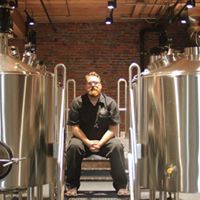Christopher R Davey
age ~71
from Houston, TX
- Also known as:
-
- Christopher Ross Davey
- Chris R Davey
- Christoph R Davey
- Chris Kay Davey
- Cr R Davey
- Christophe R Davey
- Davey Davey
- Christopher Y
- Christophe Dave
- Phone and address:
- 6147 Darnell St, Houston, TX 77074
Christopher Davey Phones & Addresses
- 6147 Darnell St, Houston, TX 77074
- 4119 Village Corner Ct, Houston, TX 77059 • (281)2863014 • (281)2866010
- 2476 Meade St, Denver, CO 80211
- Knoxville, TN
- El Lago, TX
- Dallas, TX
- 4119 Village Corner Dr, Houston, TX 77059 • (817)8748034
Work
-
Position:Executive, Administrative, and Managerial Occupations
Education
-
School / High School:Fordham University School of Law
Ranks
-
Licence:New York - Currently registered
-
Date:1991
Emails
Specialities
Buyer's Agent • Listing Agent
License Records
Christopher Allen Davey
License #:
82331 - Active
Category:
Nursing Support
Issued Date:
May 11, 2015
Effective Date:
May 11, 2015
Expiration Date:
May 11, 2017
Type:
Medication Aide
Lawyers & Attorneys

Christopher G. Davey - Lawyer
view sourceLicenses:
New York - Currently registered 1991
Education:
Fordham University School of Law
Resumes

Christopher Davey
view source
Christopher Davey
view sourceLocation:
United States

Christopher Davey
view sourceLocation:
United States
Name / Title
Company / Classification
Phones & Addresses
WILL TURNER FLIGHT LOGS, INC
Us Patents
-
Propylene Diene Copolymers
view source -
US Patent:6977287, Dec 20, 2005
-
Filed:Jun 24, 2003
-
Appl. No.:10/602177
-
Inventors:Pawan Kumar Agarwal - Houston TX, US
Weiqing Weng - Houston TX, US
Aspy K. Mehta - Humble TX, US
Armenag H. Dekmezian - Kingwood TX, US
Main Chang - Houston TX, US
Rajan K. Chudgar - League City TX, US
Christopher R. Davey - Houston TX, US
Chon-Yie Lin - Houston TX, US
Galen C. Richeson - Kingwood TX, US
Palanisamy Arjunan - Houston TX, US
Olivier Jean Georjon - Brussels, BE -
Assignee:ExxonMobil Chemical Patents Inc. - Houston TX
-
International Classification:C08F236/20
-
US Classification:526339, 526336, 526165
-
Abstract:The co-polymerization reaction of one or more olefin monomers, such as propylene, with α,ω-diene units and the resulting copolymers are provided. More specifically, the copolymer may have from 90 to 99. 999 weight percent of olefins and from 0. 001 to 2. 000 weight percent of α,ω-dienes. The copolymer may have a weight average molecular weight in the range from 50,000 to 2,000,000, a crystallization temperature in the range from 115 C. to 135 C. and a melt flow rate in the range from 0. 1 dg/min to 100 dg/min. These copolymers may be employed in a wide variety of applications, the articles of which include, for example, films, fibers, such as spunbonded and meltblown fibers, fabrics, such as nonwoven fabrics, and molded articles. The copolymer may further include at least two crystalline populations. Desirably, the melting point range of one of the crystalline populations is distinguishable from the melting point range of another crystalline population by a temperature range of from 1 C. to 8 C.
-
Polymers Made With Metallocene Catalysts, For Use In Rotomolding And Injection Molding Products
view source -
US Patent:8067518, Nov 29, 2011
-
Filed:Jun 7, 2007
-
Appl. No.:11/811015
-
Inventors:Christopher R. Davey - Houston TX, US
James M. Farley - League City TX, US
Rainer Kolb - Kingwood TX, US
Mark P. Ossowski - Bridgewater NJ, US -
Assignee:Univation Technologies, LLC - Houston TX
-
International Classification:C08F 4/76
C08F 210/02
C08F 210/06
C08F 210/08
C08F 210/14
C08F 210/16 -
US Classification:526348, 526183, 526185, 526188, 526190, 526192, 526226, 5263481, 5263482, 5263486, 526943
-
Abstract:Ethylene alpha-olefin copolymers formed by contacting at least one supported metallocene catalyst, ethylene, and an alpha-olefin in a gas phase reactor are disclosed. In some embodiments, the polymer may have: a density of between 0. 890 and 0. 970 g/cc; a melt index of between 0. 7 and 200 dg/min; a melt index ratio of less than 30; an ESCR value of greater than 1000 hours; and a 1% secant modulus of greater than 75,000 psi. In other embodiments, the polymer may have: a density of between 0. 930 g/cc and 0. 970 g/cc; a melt index of between 10 dg/min and 200 dg/min; a melt index ratio of between 10 and 25; a part weight of greater than 3 g and a part length of greater than 38 cm in a spiral flow test, and; a zero shear viscosity of less than 150 Pas. Processes to produce these polymers are also disclosed.
-
Polymerization Processes Using Metallocene Catalysts, Their Polymer Products And End Uses
view source -
US Patent:8084560, Dec 27, 2011
-
Filed:Jun 7, 2007
-
Appl. No.:11/810988
-
Inventors:Rainer Kolb - Kingwood TX, US
Agapios K. Agapiou - Humble TX, US
James M. Farley - League City TX, US
Eric J. Markel - Kingwood TX, US
Bruce J. Savatsky - Kingwood TX, US
Christopher R. Davey - Houston TX, US
Richard B. Pannell - Kingwood TX, US -
Assignee:Univation Technologies, LLC - Houston TX
-
International Classification:C08F 4/76
C08F 4/64
C08F 210/02 -
US Classification:526170, 526160, 526943, 526901, 526348, 5263482, 5263485, 5263522, 528396
-
Abstract:A process for the production of an ethylene alpha-olefin copolymer is disclosed, the process including polymerizing ethylene and at least one alpha-olefin by contacting the ethylene and the at least one alpha-olefin with a metallocene catalyst in at least one gas phase reactor at a reactor pressure of from 0. 7 to 70 bar and a reactor temperature of from 20 C. to 150 C. to form an ethylene alpha-olefin copolymer. The resulting ethylene alpha-olefin copolymer may have a density D of 0. 927 g/cc or less, a melt index (I) of from 0. 1 to 100 dg/min, a MWD of from 1. 5 to 5. The resulting ethylene alpha-olefin copolymer may also have a peak melting temperature Tsatisfying the following relation: T>D*398−245.
-
Polymerization Processes Using Metallocene Catalysts, Their Polymer Products And End Uses
view source -
US Patent:8476392, Jul 2, 2013
-
Filed:Oct 22, 2010
-
Appl. No.:12/910482
-
Inventors:Rainer Kolb - Kingwood TX, US
Agapios K. Agapiou - Humble TX, US
James M. Farley - League City TX, US
Eric J. Markel - Kingwood TX, US
Bruce J. Savatsky - Kingwood TX, US
Christopher R. Davey - Houston TX, US
Richard B. Pannell - Kingwood TX, US -
Assignee:Univation Technologies, LLC - Houston TX
-
International Classification:C08F 4/76
C08F 4/64
C08F 210/02 -
US Classification:526328, 525240, 526183, 526348
-
Abstract:A process for the production of an ethylene alpha-olefin copolymer is disclosed, the process including polymerizing ethylene and at least one alpha-olefin by contacting the ethylene and the at least one alpha-olefin with a metallocene catalyst in at least one gas phase reactor at a reactor pressure of from 0. 7 to 70 bar and a reactor temperature of from 20 C. to 150 C. to form an ethylene alpha-olefin copolymer. The resulting ethylene alpha-olefin copolymer may have a density D of 0. 927 g/cc or less, a melt index (I) of from 0. 1 to 100 dg/min, a MWD of from 1. 5 to 5. The resulting ethylene alpha-olefin copolymer may also have a peak melting temperature Tsatisfying the following relation: T>D*398−245.
-
Propylene Diene Copolymers
view source -
US Patent:20010007896, Jul 12, 2001
-
Filed:Dec 11, 2000
-
Appl. No.:09/734479
-
Inventors:Pawan Agarwal - Houston TX, US
Weiqing Weng - Houston TX, US
Aspy Mehta - Humble TX, US
Armenag Dekmezian - Kingwood TX, US
Christopher Davey - Houston TX, US
Charlie Lin - Houston TX, US
Michael Chen - Houston TX, US
Galen Richeson - Kingwood TX, US
Rajan Chudgar - League City TX, US
Main Chang - Houston TX, US -
International Classification:C08F036/02
-
US Classification:526/335000, 526/348200, 526/348300, 526/348400, 526/348500, 526/348600
-
Abstract:The co-polymerization reaction of one or more olefin monomers, such as propylene, with ,-diene units and the resulting copolymers are provided. More specifically, the copolymer may have from 90 to 99.999 weight percent of olefins and from 0.001 to 2.000 weight percent of ,)-dienes. The copolymer may have a weight average molecular weight in the range from 50,000 to 2,000,000, a crystallization temperature in the range from 115 C. to 135 C. and a melt flow rate in the range from 0.1 dg/min to 100 dg/min. These copolymers may be employed in a wide variety of applications, the articles of which include, for example, films, fibers, such as spunbonded and meltblown fibers, fabrics, such as nonwoven fabrics, and molded articles. The copolymer may further include at least two crystalline populations. Desirably, the melting point range of one of the crystalline populations is distinguishable from the melting point range of another crystalline population by a temperature range of from 1 C. to 8 C. More desirably, one of the crystalline populations has a melting point in the range from 152 C. to 158 C. and another crystalline population has a melting point in the range from 142 C. to 148 C.
-
Article Formed From Propylene Diene Copolymers
view source -
US Patent:20010016639, Aug 23, 2001
-
Filed:Dec 11, 2000
-
Appl. No.:09/734100
-
Inventors:Pawan Agarwal - Houston TX, US
Weiqing Weng - Houston TX, US
Aspy Mehta - Humble TX, US
Armenag Dekmezian - Kingwood TX, US
Christopher Davey - Houston TX, US
Charlie Lin - Houston TX, US
Michael Chen - Houston TX, US
Galen Richeson - Kingwood TX, US -
International Classification:C08F010/14
-
US Classification:526/336000, 526/348200, 526/348300, 526/348500, 526/348600
-
Abstract:The co-polymerization reaction of one or more olefin monomers, such as propylene, with ,-diene units and the resulting copolymers are provided. More specifically, the copolymer may have from 90 to 99.999 weight percent of olefins and from 0.001 to 2.000 weight percent of ,-dienes. The copolymer may have a weight average molecular weight in the range from 50,000 to 2,000,000, a crystallization temperature in the range from 115 C. to 135 C. and a melt flow rate in the range from 0.1 dg/min to 100 dg/min. These copolymers may be employed in a wide variety of applications, the articles of which include, for example, films, fibers, such as spunbonded and meltblown fibers, fabrics, such as nonwoven fabrics, and molded articles. The copolymer may further include at least two crystalline populations. Desirably, the melting point range of one of the crystalline populations is distinguishable from the melting point range of another crystalline population by a temperature range of from 1 C. to 8 C. More desirably, one of the crystalline populations has a melting point in the range from 152 C. to 158 C. and another crystalline population has a melting point in the range from 142 C. to 148 C.
-
Articles Formed From Propylene Diene Copolymers
view source -
US Patent:20010053837, Dec 20, 2001
-
Filed:Feb 20, 2001
-
Appl. No.:09/788810
-
Inventors:Pawan Agarwal - Houston TX, US
Weiqing Weng - Houston TX, US
Aspy Mehta - Humble TX, US
Armenag Dekmezian - Kingwood TX, US
Main Chang - Houston TX, US
Rajan Chudgar - League City TX, US
Christopher Davey - Houston TX, US
Charlie Lin - Houston TX, US
Michael Chen - Houston TX, US
Galen Richeson - Kingwood TX, US -
International Classification:C08F110/00
-
US Classification:526/335000, 526/348100, 526/348200, 526/348300, 526/348500, 526/348600
-
Abstract:The copolymerization reaction of one or more olefin monomers, such as propylene, with ,-diene units and the resulting copolymers are provided. More specifically, the copolymer may have from 90 to 99.999 weight percent of olefins and from 0.001 to 2.000 weight percent of ,-dienes. The copolymer may have a weight average molecular weight in the range from 50,000 to 2,000,000, a crystallization temperature (without the use of externally added nucleating agents) in the range from 115 C. to 135 C. and a melt flow rate in the range from 0.1 dg/min to 100 dg/min. These copolymers may be employed in a wide variety of applications, the articles of which include, for example, films, fibers, such as spunbonded and meltblown fibers, fabrics, such as nonwoven fabrics, and molded articles. The copolymer may further include at least two crystalline populations. Desirably, the melting point range of one of the crystalline populations is distinguishable from the melting point range of another crystalline population by a temperature range of from 1 C. to 16 C. More desirably, one of the crystalline populations has a melting point in the range from 152 C. to 158 C. and another crystalline population has a melting point in the range from 142 C. to 148 C.
-
Propylene Diene Copolymers
view source -
US Patent:20020013440, Jan 31, 2002
-
Filed:Feb 20, 2001
-
Appl. No.:09/788811
-
Inventors:Pawan Agarwal - Houston TX, US
Weiqing Weng - Houston TX, US
Aspy Mehta - Humble TX, US
Armenag Dekmezian - Kingwood TX, US
Main Chang - Houston TX, US
Rajan Chudgar - League City TX, US
Christopher Davey - Houston TX, US
Charlie Lin - Houston TX, US
Michael Chen - Houston TX, US
Galen Richeson - Kingwood TX, US -
International Classification:C08F236/00
C08F112/34
C08F136/00 -
US Classification:526/335000, 526/336000, 526/339000
-
Abstract:The co-polymerization reaction of one or more olefin monomers, such as propylene, with ,-diene units and the resulting copolymers are provided. More specifically, the copolymer may have from 90 to 99.999 weight percent of olefins and from 0.001 to 2.000 weight percent of ,-dienes. The copolymer may have a weight average molecular weight in the range from 50,000 to 2,000,000, a crystallization temperature in the range from 115 C. to 135 C. and a melt flow rate in the range from 0.1 dg/min to 100 dg/min. These copolymers may be employed in a wide variety of applications, the articles of which include, for example, films, fibers, such as spunbonded and meltblown fibers, fabrics, such as nonwoven fabrics, and molded articles. The copolymer may further include at least two crystalline populations. Desirably, the melting point range of one of the crystalline populations is distinguishable from the melting point range of another crystalline population by a temperature range of from 1 C. to 8 C. More desirably, one of the crystalline populations has a melting point in the range from 152 C. to 158 C. and another crystalline population has a melting point in the range from 142 C. to 148 C.
Vehicle Records
-
Christopher Davey
view source -
Address:4119 Vlg Cor Dr, Houston, TX 77059
-
VIN:JTNBB46K473029847
-
Make:TOYOTA
-
Model:CAMRY HYBRID
-
Year:2007
Isbn (Books And Publications)

Plaxo

Christopher Davey
view sourceSoftware Dev Eng in Test at Galileo Processing

Christopher Davey
view sourceLeavesden Parish
Myspace
Classmates

Christopher Davey, Bay Hi...
view source
Christopher Davey, Everma...
view source
Bay High School, Panama c...
view sourceGraduates:
Christopher Davey (1994-1998),
Thomas Skipper (1969-1973),
Joe Smith (1992-1996),
Adena Hansen (1984-1988)
Thomas Skipper (1969-1973),
Joe Smith (1992-1996),
Adena Hansen (1984-1988)

Whippany Park High School...
view sourceGraduates:
Christopher Davey (1976-1980),
Jennifer Genneken (1984-1988),
Rob White (1983-1987),
Theresa Battista (1971-1975),
Joseph Echandia (1988-1992)
Jennifer Genneken (1984-1988),
Rob White (1983-1987),
Theresa Battista (1971-1975),
Joseph Echandia (1988-1992)

Everman High School, Ever...
view sourceGraduates:
Rhonda Richardson (1979-1983),
Blaine Harrell (1998-2002),
Deborah Washburn (1976-1980),
Christopher Davey (2002-2006)
Blaine Harrell (1998-2002),
Deborah Washburn (1976-1980),
Christopher Davey (2002-2006)

Queen's University - Appl...
view sourceGraduates:
David Kowalewski (1974-1978),
Peter Luscher (1985-1989),
Christopher Davey (1995-1999),
Desmond Annala (1954-1957)
Peter Luscher (1985-1989),
Christopher Davey (1995-1999),
Desmond Annala (1954-1957)

Saugeen District High Sch...
view sourceGraduates:
Chris Davey (1970-1974),
Bob Greig (1986-1990),
Jason Sine (1987-1991),
Rob Vaughan (1974-1978),
Adrianne Mead (1989-1993)
Bob Greig (1986-1990),
Jason Sine (1987-1991),
Rob Vaughan (1974-1978),
Adrianne Mead (1989-1993)

Hofstra University, Hemps...
view sourceGraduates:
David Benyaminy (1989-1993),
Susan Ballinger (1980-1984),
Andrew Geallis (1985-1990),
Chris Davey (1984-1988)
Susan Ballinger (1980-1984),
Andrew Geallis (1985-1990),
Chris Davey (1984-1988)
Youtube
Flickr
Googleplus

Christopher Davey

Christopher Davey

Christopher Davey

Christopher Davey

Christopher Davey

Christopher Davey

Christopher Davey

Christopher Davey

Mark Christopher Davey
view source
Christopher Davey
view source
Kevin Christopher Davey
view source
Christopher Davey
view source
Christopher Davey
view source
Christopher Leigh Davey
view source
Christopher Davey
view source
Christopher Davey
view sourceNews

Tributes to Nepal crash Britons
view source- incent Kelly, 50, from Lostock, Bolton, and his brother Darren, 45, who moved from Bolton to the village of Isle of Whithorn in southern Galloway a few years ago. Christopher Davey, 51, from Northampton, Stephen Holding, 60, from Stoke-on-Trent, and lawyer Benjamin Ogden, 27, from London also perished.
- Date: Sep 29, 2012
- Category: World
- Source: Google

Witnesses say the twin-engine plane burst into flames before landing near a ...
view source- The other Britons killed were named today by local travel company Sherpa Adventures as Raymond Eagle, 58, Christopher Davey, 51, brothers Vincent Kelly, 50, and Darren Kelly, 45, Timothy Oakes, 57, and Stephen Holding, 60, according to the Press Association.
- Date: Sep 28, 2012
- Source: Google

Nepal plane crash: dead Britons named
view source- The British victims were identified by local travel company Sherpa Adventures as Raymond Eagle, 58, Christopher Davey, 51, Vincent Kelly, 50, Darren Kelly, 45, Timothy Oakes, 57, Stephen Holding, 60, and Benjamin Ogden, 27.
- Date: Sep 28, 2012
- Category: World
- Source: Google

Nepal plane crash
view source- The Press Association identified the Britons, quoting local travel company Sherpa Adventures, as Raymond Eagle, 58; Christopher Davey, 51; Vincent Kelly, 50; Darren Kelly, 45; Timothy Oakes, 57; Stephen Holding, 60; and Benjamin Ogden, 27.
- Date: Sep 28, 2012
- Source: Google
Get Report for Christopher R Davey from Houston, TX, age ~71















